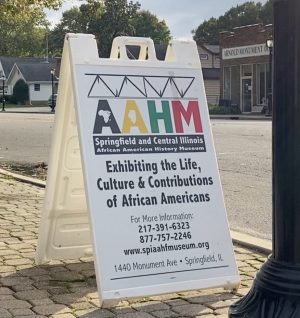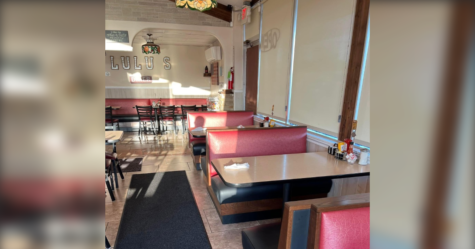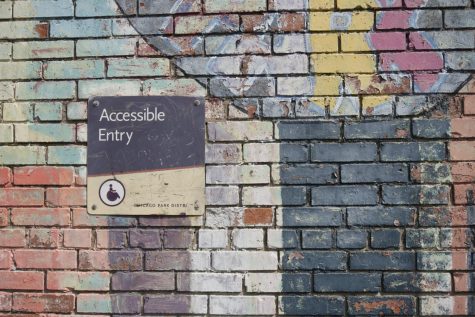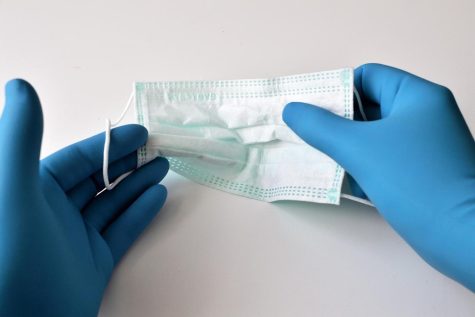Springfield and Central Illinois African American History Museum
A museum goer sitting on the bench watching a program at the Springfield and Central Illinois African American History Museum | Photo credit: Richard Bailey
The Oak Ridge Cemetery is the location of the final resting place of the first slain American President, Abraham Lincoln. The winding roads that lead past the graves of prominent figures in Sangamon County and Illinois history lead to a parking lot and restrooms near the ornate mausoleum, a common stop for tour groups and history buffs. There are stairs leading to the top of the building where visitors could, once upon a time, walk freely among the statues of Union soldiers in battle. The craftsmanship is astonishing and likely breathtaking up close, but the upper floor has been closed for some time due to safety concerns. Outside of the tomb stands a bronze statue of Abraham Lincoln. The nose is a significantly lighter color than the rest of the bust from the thousands of tourist hands that have rubbed it over the years.
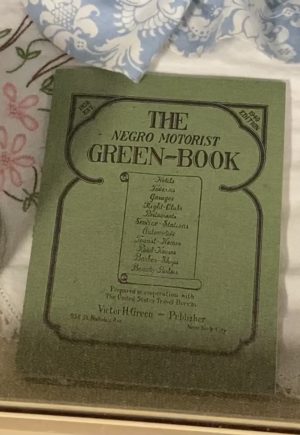 The Springfield and Central Illinois African American History Museum has been located near the Southside entrance of the cemetery since 2016. The building is host to events such as book readings, art showcases, and several permanent exhibits. Several historical Black churches in Springfield are documented in the museum, alongside photos of congregations from generations past. The names of the appointed ministers are listed. Another exhibit features photos and other items owned by Black residents of Springfield. One item of note is a copy of The Negro Motorist Green Book by Victor Hugo Green. In it is a list of restaurants, bars, and hotels along with the names of cities and towns that Black people could go to without expecting trouble. The publication was the focus of the 2018 film, The Green Book which won the Academy Award for Best Picture.
The Springfield and Central Illinois African American History Museum has been located near the Southside entrance of the cemetery since 2016. The building is host to events such as book readings, art showcases, and several permanent exhibits. Several historical Black churches in Springfield are documented in the museum, alongside photos of congregations from generations past. The names of the appointed ministers are listed. Another exhibit features photos and other items owned by Black residents of Springfield. One item of note is a copy of The Negro Motorist Green Book by Victor Hugo Green. In it is a list of restaurants, bars, and hotels along with the names of cities and towns that Black people could go to without expecting trouble. The publication was the focus of the 2018 film, The Green Book which won the Academy Award for Best Picture.
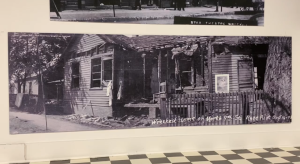 One of the larger exhibits is focused on the 1908 race riots that saw thousands of Springfield residents destroy Black homes and Black businesses, as well as murder Black people on the street. The violence lasted for two days from August 14 to August 16, only settling down after the Illinois National Guard was sent in to keep the peace. The event directly caused the creation of the National Association for the Advancement of Colored People (NAACP).
One of the larger exhibits is focused on the 1908 race riots that saw thousands of Springfield residents destroy Black homes and Black businesses, as well as murder Black people on the street. The violence lasted for two days from August 14 to August 16, only settling down after the Illinois National Guard was sent in to keep the peace. The event directly caused the creation of the National Association for the Advancement of Colored People (NAACP).
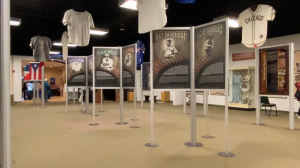 The museum’s goal is for Black people to be able to tell their stories in their own words through oral history and personal experiences. A small part of the exhibit focuses on the Middle Passage and the enslavement of African natives. Across the hall, there are photos of important figures in Black history along with photos of people local to Springfield who recently gathered to exercise their First Amendment right at the State Capital. A temporary exhibit focused on the Negro Baseball League brought in a lot of baseball fans who idolized the many athletes who never got the right to play the sport in the way we know it today (Jackie Robinson became the first African American baseball player in the major league in 1947).
The museum’s goal is for Black people to be able to tell their stories in their own words through oral history and personal experiences. A small part of the exhibit focuses on the Middle Passage and the enslavement of African natives. Across the hall, there are photos of important figures in Black history along with photos of people local to Springfield who recently gathered to exercise their First Amendment right at the State Capital. A temporary exhibit focused on the Negro Baseball League brought in a lot of baseball fans who idolized the many athletes who never got the right to play the sport in the way we know it today (Jackie Robinson became the first African American baseball player in the major league in 1947).
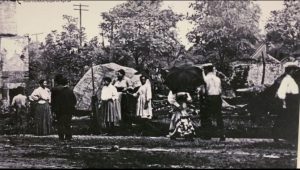 The Springfield and Central Illinois African American History Museum is open to the public year-round, Tuesday-Saturday from 12 p.m. – 4 p.m. Visit them online at https://spiaahm.org
The Springfield and Central Illinois African American History Museum is open to the public year-round, Tuesday-Saturday from 12 p.m. – 4 p.m. Visit them online at https://spiaahm.org




